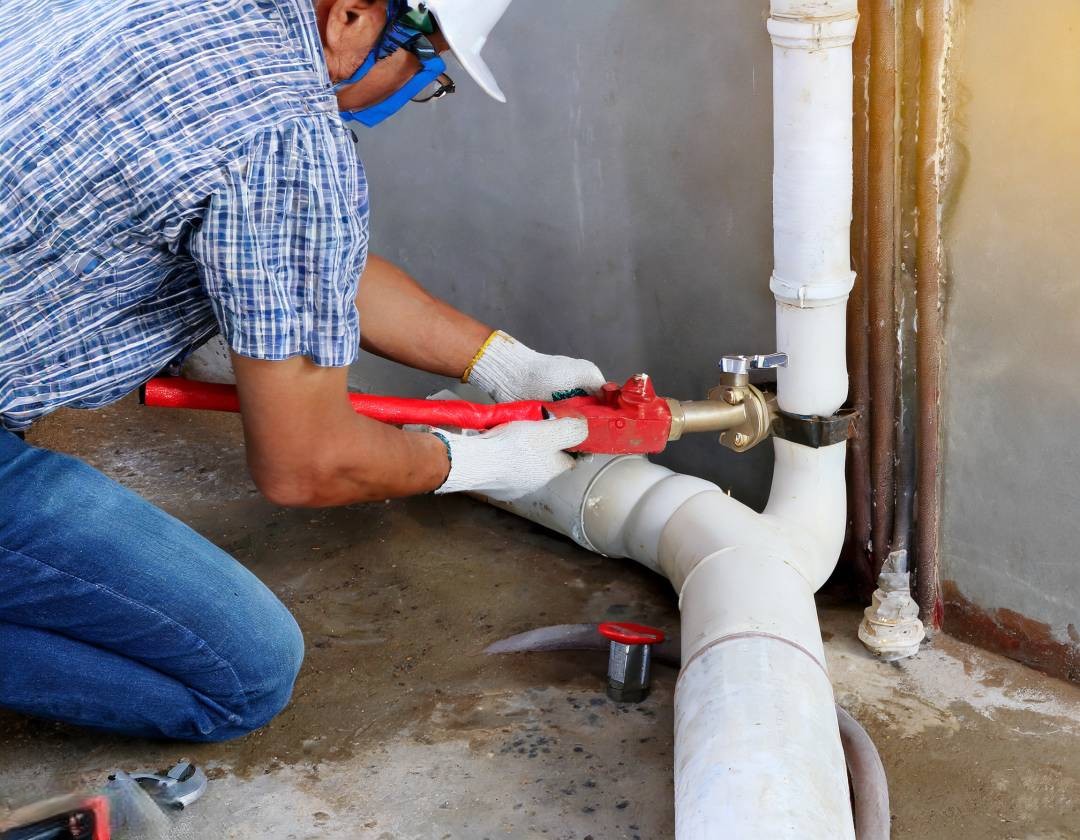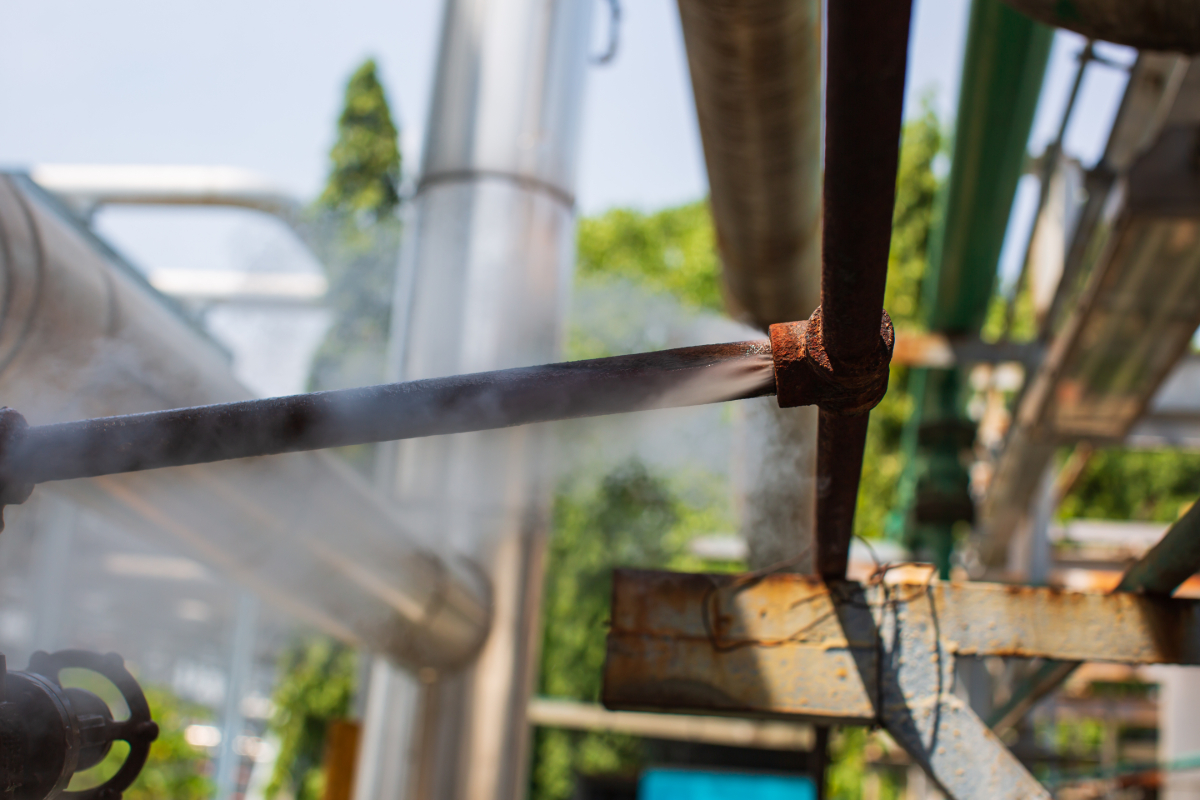We have noticed the article involving Common Plumbing Problems in Older Homes listed below on the web and believe it made sense to quickly share it with you on this site.

Older homes typically include charm, personality, and history, yet they can likewise bring a host of plumbing problems. Whether you're taking care of aging pipelines, low water stress, or leaks, recognizing exactly how to address these usual issues is crucial to preserving a safe and practical home. In this guide, we'll check out the normal pipes challenges encountered by older homes and provide useful services to keep your plumbing in leading form.
Comprehending Common Pipes Concerns
Aging Pipes
Among the most typical concerns in older homes is aging pipelines. Depending upon the period in which your home was built, the pipelines could be made from materials that have actually deteriorated gradually, such as galvanized steel, cast iron, or even lead. These products can wear away, become breakable, or develop leaks, causing water damage and prospective carcinogen.
Water Quality Screening
Older pipelines can affect the high quality of your water. Conduct a water top quality test to check for impurities such as lead, corrosion, or other impurities that might be presented by aging pipes.
Solutions for Typical Pipes Concerns
Replacing Aging Pipes
If your home has old, degrading pipes, think about changing them with modern-day products like copper or PEX. This can be a significant investment, however it will certainly prevent future issues and enhance the security and integrity of your pipes system.
Dealing With Low Water Pressure
To take care of low tide stress, beginning by cleansing or changing old components and removing mineral buildup in the pipes. If the problem continues, it may be required to replace sections of rusty pipelines.
Repairing and Replacing Leaking Pipes
For little leaks, you can use pipe clamps or epoxy putty as a short-term fix. Nevertheless, it's finest to replace leaking pipes completely to prevent further damage.
Upgrading Components
Updating old components to modern, water-efficient models can enhance your home's plumbing performance and lower water usage. Seek components with the WaterSense tag for the best efficiency.
Dealing with Pipe Corrosion
If your pipelines are rusted, replacing them with corrosion-resistant materials like copper, PVC, or PEX is the best remedy. Normal assessments and water high quality upkeep can aid stop even more corrosion.
Low Tide Stress
If you're experiencing low water pressure, it could be due to mineral deposits, deterioration inside the pipelines, or old fixtures that are no more operating efficiently. This can be a significant trouble, especially in locations like showers and sinks.
Dripping Pipes
Leakages are one more regular issue in older homes, frequently brought on by rusty or worn-out pipelines. Even tiny leaks can cause considerable water damages, mold and mildew growth, and raised water expenses if not addressed without delay.
Out-of-date Components
Out-of-date plumbing components such as faucets, toilets, and showerheads not just look old but might also be much less efficient, vulnerable to leaks, or inappropriate with contemporary pipes requirements.
Pipeline Rust
Deterioration is a typical issue in older pipelines, especially those made from galvanized steel or actors iron. Corroded pipelines can restrict water flow, trigger staining, and eventually cause leaks or pipe ruptureds.
Evaluating the Problem of Your Pipes
Inspecting Visible Pipelines
Start by checking any kind of visible pipelines in your home, such as those in cellars, crawl spaces, or under sinks. Look for indications of deterioration, leaks, or corrosion, which can show underlying problems.
Checking for Leakages
Look for leakages by inspecting locations around taps, bathrooms, and under sinks. You can additionally check your water meter before and after a period of no water make use of to spot concealed leaks.
When to Call a Specialist
While some plumbing issues can be managed with do it yourself solutions, there are times when it's best to hire an expert. If you're managing major leaks, comprehensive deterioration, or are unclear about the problem of your pipelines, a licensed plumbing can supply experienced assessment and repair.
Preventive Maintenance Tips
Normal Inspections
Frequently check your pipes system for indicators of damage. Capturing problems early can stop expensive repair services down the line.
Water Stress Law
Guarantee your water stress is within the advised range to avoid stressing your pipes and fixtures. A plumbing can set up a pressure regulator if needed.
Water Quality Upkeep
Mount water filters or conditioners if your water top quality is poor. This can secure your pipelines and components from damages brought on by tough water or pollutants.
Positive Pipe Replacement
If your home has older pipes, consider aggressive substitute prior to major issues arise. This can conserve you from emergency fixings and water damages.
Final thought
Handling plumbing concerns in older homes calls for a combination of caution, precautionary maintenance, and prompt upgrades. By recognizing the typical challenges and knowing when to seek specialist assistance, you can ensure your pipes system continues to be practical and dependable for several years to come.
Common Plumbing Problems in Older Homes
Older homes have a ton of character from the antique brass faucets, clawfoot tubs, and colorful tile to the Dutch doors, transom windows, and archways, there s a lot to love. Unfortunately, that character often includes old plumbing that s past its prime and isn t fit to support modern appliances.
If you own an older home and are suspicious about strange noises (ghosts?), smells, leaks, or frequent clogs in your plumbing, it's possible that your home s old age is to blame.
Learn more about the most common old house plumbing problems, and what can be done to fix them!
What Are the Most Common Plumbing Problems in Old Houses?
- Old, corroded piping. Most older pipes are made of material that corrodes and rusts more easily. Even if over the years some of that piping was replaced with better material, the rest may be damaged or repaired with lower-quality material. Though expensive, it may be the best option to re-pipe your plumbing especially if there s rust or lead in your water.
- Slow drains. This could be the result of many issues, but most likely because of pipe bellies. These are sags in your drainpipes that happen as your home settles and shifts downward over time, putting pressure on your pipes and creating negative slopes. This can restrict water from flowing correctly through them and result in slow drains.
- Frequent clogging. As you might expect, pipe bellies can also lead to frequent clogging. Another reason for clogging could be due to buildup over time, or blockages from sediment and root growth. Scheduling a drain inspection and drain unclogging service can eliminate this issue.
- Damaged or failing sewer lines. Old homes are more likely to have foundational shifts and tree root overgrowth. This can put a lot of pressure on and in your sewer lines, leading to damage. Another common reason for failed sewer lines is because of modern appliance upgrades. Newer appliances put more strain on sewer lines, and if your old pipes aren t equipped to handle this, it can result in damage. If you have any wastewater backup, slow drains, or soft spots in your yard, you may need sewer line replacement.
- Worn or outdated fixtures. Plumbing fixtures old or new aren t built to last forever. Even if your fixtures seem like they re working well, it s best to check the wear on any internal parts. Minor wear and tear over time can lead to more costly leaks and plumbing issues. Our experts can perform a plumbing inspection for any part of your home s plumbing.
- Improper installations or repairs. Whether your plumbing was installed a hundred years ago, installed incorrectly, repaired incorrectly, or repaired with outdated materials, this can affect the long-term stability of your plumbing. In older homes especially, having your plumbing inspected is vital to preventing damage.
What Are Old Plumbing Pipes Made Of?
- Galvanized steel. Most often used between the 1930s and the 1980s, this piping material was discovered later in the 1990s to be prone to rust and corrosion, releasing lead into the water, which is dangerous to consume.
- Copper. Most homes built around the 1960s are likely to have copper piping. Unlike galvanized steel, copper is one of the most durable materials for plumbing pipes. The issue with this material is the risk of lead, which could be present in the piping itself or the solder applied to the joints and fittings.
- PVC. This material is still used today and was often used in older homes where piping was replaced because it was easy and inexpensive to install. PVC is also very durable, lead-free, resistant to rust and corrosion, and handles high water pressure well. The downside is that hot water can make it warp.
How to Fix Plumbing Problems in Old Homes
- Have your plumbing inspected. Before you begin or schedule any type of repair, schedule a plumbing inspection. An expert will be able to properly identify all the issues in your plumbing and the best solution to avoid further damage.
- Get your plumbing repaired or replaced as needed. Depending on the issues found with your plumbing, you may need minor repairs or larger replacements. Make sure these issues are addressed before you tackle any smaller issues.
- Remove any clogs or buildup. It s likely your old pipes are clogged with debris, mineral buildup, hair, tree roots, and more. Having your drainpipes cleaned will improve overall drainage and help prevent future leaks.
- Replace old fixtures. Before replacing any fixtures, check with your local plumber first. Not only can new fixtures strain your old plumbing pipes, but installing them incorrectly can lead to costly damage.

As an enthusiastic person who reads on Plumbing Issues in Older Properties and How to Fix Them, I think sharing that piece of content was really helpful. Sharing is good. You just don't know, you might be helping someone out. We cherish your readership.
Automated Marketing
Comments on “Managing Plumbing Problems in Older Homes: Key Guidance”